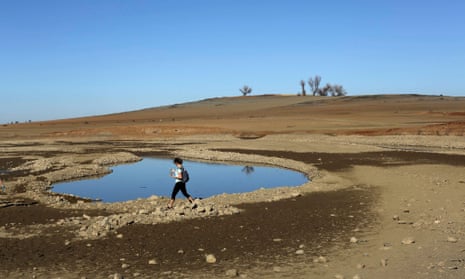As California experiences the fourth year of one of the most severe droughts in its history, a senior Nasa scientist has warned that the state has about one year of water left.
In an LA Times editorial published last week, Nasa Jet Propulsion Laboratory senior water cycle scientist Jay Famiglietti called for a more “forward-looking process” to deal with the state’s dwindling water supply.
Famiglietti, who is also a professor at University of California at Irvine, said the state had about one year of water in reservoir storage and the backup supply, groundwater, was low.
“California has no contingency plan for a persistent drought like this one (let alone a 20-plus-year mega-drought), except, apparently, staying in emergency mode and praying for rain,” Famiglietti wrote. “In short, we have no paddle to navigate this crisis.”
Nasa data shows that water storage has been in steady decline in California since at least 2002, before the drought began.
Famiglietti called for specific measures to combat the crisis, including accelerated implementation of a law that requires groundwater sustainability, a state taskforce focused on long-term solutions and immediate, mandatory rationing. He also said there was a need for the public to be more involved in the issue.
A Field poll released in February showed that 34% of California voters supported a mandatory rationing policy, though 94% agreed that the drought is “serious”. The majority of respondents – 61% – favored the voluntary reductions the state currently encourages.
On Tuesday, the State Water Resources Control Board is scheduled to vote on a conservation measure that would limit landscape watering, the strictest mandate directed at such water use the state has considered.
“Our state’s water management is complex, but the technology and expertise exist to handle this harrowing future,” Famiglietti said. “It will require major changes in policy and infrastructure that could take decades to identify and act upon. Today, not tomorrow, is the time to begin.”
Scientists are working to determine what role climate change has played in California’s drought. Earlier this month, a study by Stanford researchers showed that high temperatures increase the risk of drought conditions. Last year, two research teams said in the Bulletin of the American Meteorological Society that they could not definitively pin the drought on climate change.
A third team, which includes a Stanford researcher from the previous study, said that rare atmospheric conditions are exacerbating the drought.

Comments (…)
Sign in or create your Guardian account to join the discussion